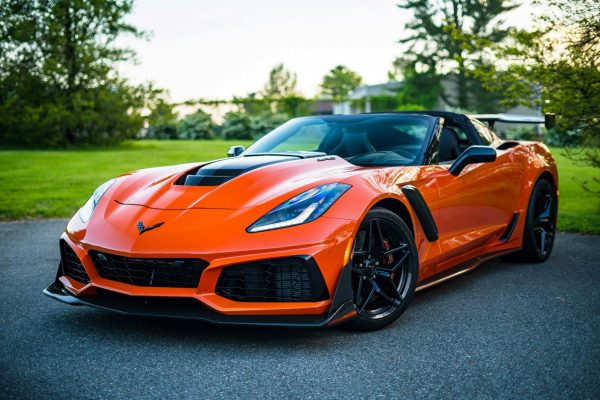What Is Ceramic Coating?
Ceramic coating is a liquid polymer applied to a vehicle’s exterior that chemically bonds with the factory paint, creating a layer of protection. Unlike traditional waxes or sealants, ceramic coatings form a semi-permanent bond with the paint surface, providing long-lasting protection against environmental contaminants and UV damage.
Modern ceramic coatings contain silicon dioxide (SiO2) or titanium dioxide (TiO2), which create a hydrophobic surface that repels water, dirt, and other contaminants. This advanced technology has revolutionized how car enthusiasts and everyday drivers protect their vehicles’ paint.
How Ceramic Coating Protects Your Paint
Ceramic coatings protect your vehicle’s paint in multiple ways:
- UV Protection: Prevents oxidation and fading caused by harmful ultraviolet rays
- Chemical Resistance: Guards against environmental contaminants like acid rain, bird droppings, and tree sap
- Hydrophobic Properties: Creates a water-repellent surface that makes cleaning easier
- Scratch Resistance: Provides a harder surface than factory paint alone, offering light scratch protection
- Enhanced Gloss: Maintains and enhances your vehicle’s shine for years rather than months
The nanoscopic particles in ceramic coatings fill in the microscopic pores in your paint, creating a smooth, glass-like surface that contaminants struggle to adhere to. This makes maintenance significantly easier while providing superior protection compared to traditional methods.
Ceramic Coating vs. Traditional Paint Protection Methods
When comparing ceramic coatings to traditional protection methods like waxes and sealants, several differences become apparent. Traditional carnauba wax typically lasts 2-3 months before needing reapplication. Synthetic sealants might extend that to 6 months. In contrast, a properly applied ceramic coating can last 2-5 years or more with proper maintenance.
While waxes and sealants sit on top of your paint, ceramic coatings chemically bond with it, creating a much stronger connection that won’t wash away during normal cleaning. This means longer-lasting protection and less frequent reapplication.
However, ceramic coatings require more intensive preparation and application than traditional methods. Your vehicle’s paint must be perfectly clean, polished, and free of contaminants before application, often requiring professional installation for best results.
The Cost Factor: Is Ceramic Coating Worth the Investment?
Ceramic coating represents a significant upfront investment compared to DIY waxing or sealants. Professional ceramic coating services typically range from $500 to $2,000 depending on the vehicle size, condition, and coating quality. DIY ceramic coating kits are available but require careful application and don’t offer the same durability as professional-grade products.
When considering the value proposition, remember that ceramic coatings can last years rather than months. Over time, this reduces the frequency and cost of reapplications, potentially making it more economical in the long run for those planning to keep their vehicles for several years.
Beyond cost considerations, ceramic coatings also save time on maintenance and cleaning while providing superior protection and aesthetic benefits that traditional methods simply cannot match.
Limitations of Ceramic Coating
Despite their advantages, ceramic coatings aren’t perfect or maintenance-free. Here are some important limitations to consider:
- Not Self-Healing: Ceramic coatings don’t repair scratches or damage; they only provide a barrier against future damage
- Not Scratch-Proof: While resistant to light scratches, ceramic coatings can still be scratched by more significant impacts
- Professional Application Recommended: Improper application can lead to uneven coverage, high spots, or streaking
- Requires Maintenance: Regular maintenance washes and occasional refresher products are needed to maintain optimal performance
- Paint Correction Often Needed First: Any existing swirls, scratches, or defects will be sealed under the coating if not corrected first
Understanding these limitations helps set realistic expectations about what ceramic coatings can and cannot do for your vehicle’s protection.
Alternatives to Ceramic Coating
If ceramic coating doesn’t seem right for your needs or budget, several alternatives exist:
Paint Protection Film (PPF)
Paint Protection Film is a clear urethane film applied to the vehicle’s exterior. Unlike ceramic coatings, PPF:
- Offers superior impact and scratch protection
- Features self-healing properties that can repair minor scratches with heat
- Provides a physical barrier against rock chips and road debris
- Can be combined with ceramic coating for ultimate protection
- Typically costs more than ceramic coating alone
Vinyl Wraps
At Wraps Motorsports in San Diego, we specialize in premium vinyl wraps that not only transform your vehicle’s appearance but also protect the original paint underneath. Our vinyl wraps:
- Completely change your vehicle’s color or finish without permanent commitment
- Protect the original paint from UV damage and minor scratches
- Allow for creative customization options not possible with other protection methods
- Can last 5-7 years with proper care
- Provide a removable option that preserves resale value
Hybrid Solutions
For many vehicle owners, the best approach combines multiple protection methods. A paint protection film on high-impact areas (front bumper, hood, fenders) paired with ceramic coating over the entire vehicle provides comprehensive protection. Alternatively, a full vinyl wrap with ceramic coating applied over it creates a stunning, protected finish that’s easy to maintain.
Maintaining Your Car’s Paint Protection
Regardless of which protection method you choose, proper maintenance is essential for longevity and performance. Follow these guidelines:
- Use pH-neutral car wash soaps specifically formulated for coated vehicles
- Avoid automatic car washes with abrasive brushes that can damage the protection
- Wash regularly to prevent dirt buildup that could eventually compromise the protection
- Apply annual “topper” products for ceramic coatings to maintain hydrophobic properties
- Address bird droppings, tree sap, and other contaminants immediately to prevent etching
With proper care, your chosen paint protection solution will continue performing optimally throughout its expected lifespan.
Making the Right Choice for Your Vehicle
The “best” paint protection solution depends on your specific needs, budget, and goals. Consider these factors when deciding:
- Vehicle Value and Age: Higher-value or newer cars may warrant more premium protection
- Usage Conditions: Daily drivers in harsh environments benefit more from comprehensive protection
- Ownership Timeline: Plan to keep your car for years? Long-term solutions make more sense
- Budget Constraints: Balance upfront costs against long-term value and protection needs
- Aesthetic Goals: Consider how each option affects your vehicle’s appearance
For San Diego drivers seeking the perfect balance of protection and customization, Wraps Motorsports offers professional consultation on the ideal solution for your specific vehicle. Our team can help you decide between ceramic coating, vinyl wraps, or custom combinations that provide both protection and personalization.
Contact Wraps Motorsports today for a free consultation on protecting your vehicle’s paint while enhancing its appearance with our premium vinyl wrap services. Your car deserves the best protection available—let our experts help you find the perfect solution.

